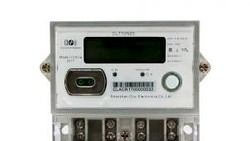Microgrids have emerged as a promising solution for enhancing energy resilience, integrating renewable energy sources, and improving grid reliability. These localized power systems operate independently or in conjunction with the main grid, allowing for greater flexibility and control over energy generation and distribution. However, to harness the full potential of these complex systems, thorough testing is essential. This article will explore the importance of testing microgrids, along with the various types of testing and methodologies associated with this critical process. There are several key items for testing microgrids:
Protection Testing
When it comes to microgrid testing, ensuring the safety of its components is of utmost importance. That's why thorough testing of protective devices is crucial in order to prevent equipment damage and maintain the integrity of the system. Protection testing involves assessing the performance of various protective elements, such as circuit breakers and relays, to verify their ability to detect and respond appropriately to faults that may occur within the microgrid.
One key aspect of protection testing is evaluating the performance of circuit breakers. These devices play a critical role in interrupting the flow of electrical current in the event of a fault. During testing, engineers subject the circuit breakers to various fault scenarios, such as overcurrents, overvoltages, and short circuits. By doing so, they can assess the reliability and effectiveness of the circuit breakers in detecting and isolating faults, ensuring the safety of the microgrid and its connected devices.
Relays also play an essential role in protection testing. These devices are responsible for monitoring electrical parameters and initiating protective actions when abnormal conditions are detected. Engineers evaluate the performance of relays by simulating fault conditions and analysing the response of these protective devices. This allows them to determine whether the relays can accurately detect faults and initiate the appropriate protective measures.
In addition to circuit breakers and relays, other protective elements are also subjected to rigorous testing. These may include surge protectors, ground fault relays, and voltage regulators, among others. By evaluating the performance of these protective devices, engineers can ensure that the microgrid is equipped with reliable and effective safeguards against potential faults and electrical abnormalities.
Through comprehensive protection testing, engineers can verify that the protective devices within the microgrid are functioning as intended. This includes assessing their ability to detect faults promptly, initiate protective actions, and isolate faulty sections of the microgrid. By doing so, the microgrid can maintain its overall system integrity, prevent equipment damage, and ensure the safety of both the system and its users.

Reliability Testing
Reliability testing evaluates the robustness and stability of microgrid operations under different conditions. It involves simulating various scenarios to assess the system's ability to withstand disruptions, such as grid outages or fluctuations in renewable energy generation. By subjecting the microgrid to rigorous testing, engineers can gain valuable insights into its performance and identify areas for improvement to ensure uninterrupted power supply and optimal energy management.
One aspect of reliability testing is assessing the microgrid's response to grid outages. Engineers simulate scenarios where the microgrid is disconnected from the main grid and evaluate how well it can transition into island-mode. This includes analysing the effectiveness of automatic load shedding, seamless transfer of critical loads to local generation sources, and the stability of power quality during the transition. By testing the microgrid's ability to maintain power supply and balance the load demand during grid outages, engineers can ensure that critical operations remain unaffected.
Fluctuations in renewable energy generation pose unique challenges for microgrids. Reliability testing involves simulating scenarios where the availability of renewable energy sources fluctuates due to weather conditions or other factors. Engineers evaluate the microgrid's ability to balance the intermittent nature of renewable energy generation with the demand for power. This includes assessing the effectiveness of energy storage systems in smoothing out power fluctuations and optimizing their charging and discharging cycles. By testing the microgrid's response to varying renewable energy inputs, engineers can fine-tune control strategies and optimize the energy management algorithms for maximum efficiency.
Moreover, reliability testing helps identify potential vulnerabilities in the microgrid's components and systems. It involves subjecting the microgrid to prolonged stress tests, where it operates at its maximum capacity for extended periods of time. This helps identify any weak links or potential points of failure, such as overheating of equipment, excessive voltage drops, or issues with the stability of power quality. By detecting and addressing these vulnerabilities through reliability testing, engineers can enhance the overall resilience of the microgrid and minimize the risk of unexpected failures.
Functional Testing
Functional testing is a crucial aspect of ensuring the reliable and efficient operation of individual components within a microgrid. It involves assessing the performance and functionality of key elements such as inverters, energy storage systems, and other critical components to ensure they operate as intended.
One of the primary objectives of functional testing is to verify that each component within the microgrid performs its designated function accurately. For example, inverters are responsible for converting direct current (DC) from renewable energy sources, such as solar panels or wind turbines, into alternating current (AC) that can be used to power electrical loads. Functional testing of inverters involves evaluating parameters such as voltage regulation, frequency stability, and waveform quality to ensure they meet the required standards.
Energy storage systems, such as batteries, play a vital role in microgrid operations by providing backup power during grid outages or balancing the intermittent nature of renewable energy generation. Functional testing of energy storage systems involves assessing their charging and discharging capabilities, efficiency, and overall performance. Engineers evaluate factors such as the response time, capacity, and lifespan of the batteries to ensure they can reliably support the microgrid's energy management needs.
Functional testing also includes checking the compatibility and interoperability of various components within the microgrid. For example, controllers and monitoring systems need to communicate seamlessly with different devices and components. Through functional testing, engineers can verify that the communication protocols and interfaces work effectively, allowing for accurate data exchange and control signals.
In addition to individual component testing, functional testing also encompasses integrated testing, where multiple components are tested together to evaluate their combined performance. This helps identify any potential issues that may arise when the components interact with each other. By simulating realistic operating conditions and scenarios, engineers can validate the overall functionality and performance of the microgrid as a whole.
Integration Testing
Integration testing is a critical step in the development and deployment of a microgrid system. It is designed to ensure the seamless integration and interoperability of different components within the microgrid, allowing them to work together as a unified entity.
The main objective of integration testing is to evaluate how well the various components of the microgrid communicate and interact with each other. This includes components such as inverters, energy storage systems, controllers, monitoring systems, and other devices that form the backbone of the microgrid infrastructure. By testing the integration of these components, engineers can identify any compatibility issues or communication gaps that may hinder the overall performance of the system.
During integration testing, engineers simulate real-world scenarios and operating conditions to assess how the microgrid performs as a whole. This involves evaluating the system's ability to handle different load demands, respond to changes in renewable energy generation, and seamlessly transition between grid-connected and island-modes. By subjecting the microgrid to these scenarios, engineers can identify any potential issues that may arise and make necessary adjustments to optimize performance.
One essential aspect of integration testing is ensuring the interoperability of different communication protocols and interfaces used within the microgrid. This includes protocols such as Modbus and IEC 61850, which enable devices to exchange data and control signals effectively. Engineers test the compatibility of these protocols with the microgrid's components, ensuring that they can communicate seamlessly and share information accurately.
Integration testing also involves evaluating the system's fault tolerance and resilience. Engineers simulate fault conditions, such as equipment failures or disruptions in the grid, to assess how well the microgrid can detect and respond to these situations. This includes testing the effectiveness of protection mechanisms, fault isolation capabilities, and the ability to restore power quickly in the event of an outage.
Performance Testing
In addition to integration testing, another crucial aspect of microgrid testing is performance evaluation. This process involves thoroughly assessing the overall functionality and efficiency of the microgrid system, including its energy generation, storage, and distribution capabilities. Performance testing plays a vital role in determining how well the microgrid can handle various operating conditions, such as fluctuating load demands, changes in renewable energy sources, and transitioning between grid-connected and island-modes of operation.
During performance testing, engineers closely analyse and measure different parameters to gauge the microgrid's performance. These parameters include power quality, voltage stability, frequency regulation, and response times. By evaluating these factors, engineers can identify any potential shortcomings or areas for improvement in the microgrid system.
One key aspect of performance testing is assessing the energy generation capabilities of the microgrid. This involves analysing the efficiency of renewable energy sources, such as solar panels or wind turbines, in converting natural resources into usable electric power. Engineers evaluate factors like energy output, conversion efficiency, and the system's ability to adapt to varying renewable energy inputs. By assessing these parameters, engineers can optimize the microgrid's energy generation processes and ensure the most efficient use of available resources.
Furthermore, performance testing also involves evaluating the energy storage capabilities of the microgrid. This includes assessing the efficiency and effectiveness of energy storage systems, such as batteries or flywheels, in storing excess energy for later use. Engineers evaluate parameters like charging and discharging rates, energy capacity, and the system's ability to maintain energy stability during peak demand periods. By optimizing the energy storage capabilities of the microgrid, engineers can enhance its resilience and reliability in providing uninterrupted power supply.
Communication Testing
Microgrids rely on seamless communication between various components to ensure efficient and coordinated operation. Testing communication systems helps identify any potential issues and ensures smooth information exchange within the microgrid network. Communication testing involves assessing the performance and reliability of communication protocols, such as Supervisory Control and Data Acquisition (SCADA) systems, Distributed Energy Resource Management Systems, and other control systems.
During communication testing, engineers evaluate the latency, bandwidth, and data integrity of the communication channels. They simulate different scenarios, such as high network traffic, to assess the system's ability to handle increased data volume without compromising performance. Additionally, they verify the compatibility and interoperability of communication interfaces to ensure seamless integration between various components, such as renewable energy sources, energy storage systems, and grid interconnections.
Cybersecurity Testing
In our interconnected world, where microgrids heavily rely on digital communication systems, ensuring robust cybersecurity measures is paramount. Cybersecurity testing plays a crucial role in assessing the vulnerability of a microgrid's control and communication infrastructure to potential cyber threats. By evaluating the effectiveness of various security components, engineers can identify potential weaknesses and implement necessary safeguards to protect the microgrid from unauthorized access, data breaches, and disruptive cyber incidents.
One of the key aspects of cybersecurity testing is evaluating the effectiveness of firewalls. Firewalls act as a protective barrier between the microgrid's internal network and external networks, such as the internet. During testing, engineers examine the firewall's configuration and rules to ensure that they are properly configured to block any unauthorized access attempts. They also assess the firewall's ability to detect and prevent malicious incoming and outgoing traffic, providing an additional layer of protection to the microgrid's critical systems and data.
Intrusion detection systems (IDS) are another important component evaluated during cybersecurity testing. These systems monitor network traffic for any suspicious or malicious activities. Engineers assess the IDS's ability to detect and alert system administrators about potential cyber-attacks or unauthorized access attempts. By simulating various attack scenarios, they can evaluate the accuracy and effectiveness of the IDS in identifying and mitigating potential threats to the microgrid's security.
Authentication protocols are also subjected to rigorous testing to ensure the integrity of user access to the microgrid's control systems. Engineers evaluate the strength of authentication methods, such as passwords, multi-factor authentication, and biometrics, to prevent unauthorized individuals from gaining access to critical systems. By analysing the resilience of these protocols to common attack vectors, engineers can identify potential vulnerabilities and implement stronger authentication measures to safeguard the microgrid's infrastructure.
Encryption methods are another essential aspect of cybersecurity testing. These methods ensure that sensitive information transmitted within the microgrid's communication systems remains secure and protected from eavesdropping or tampering. Engineers evaluate the strength of encryption algorithms and protocols used to protect data, ensuring that they meet industry standards and are resistant to potential cyber-attacks.
By simulating various cyber-attack scenarios, engineers can identify potential weaknesses and vulnerabilities within the microgrid's control and communication infrastructure. This enables them to implement necessary safeguards and security measures to protect against unauthorized access, data breaches, and disruptive cyber incidents. Regular cybersecurity testing is essential to stay ahead of evolving cyber threats and ensure the ongoing security and reliability of the microgrid.
Recommendations for Testing Microgrids
To ensure effective microgrid testing, the following recommendations should be considered:
- Develop a Comprehensive Test Plan
Creating a detailed test plan that covers all aspects of microgrid testing is crucial. This plan should include specific testing objectives, methodologies, and performance metrics to ensure thorough evaluation. - Use a Variety of Testing Methodologies
Combining different testing methodologies, such as simulation testing, hardware-in-the-loop testing, and real-world testing, provides a more comprehensive understanding of microgrid performance. Each method offers unique insights and contributes to a more robust assessment. - Involve All Stakeholders in the Testing Process
Collaboration between system developers, operators, and end-users is vital during the testing process. Involving all stakeholders ensures a holistic approach and gathers diverse perspectives, leading to more effective testing outcomes. - Continuously Improve the Testing Process
Testing microgrids is an iterative process that requires continuous improvement. Learning from test results, implementing improvements, and staying updated with evolving technologies and standards are essential for enhancing microgrid performance.
Takeaway
Thorough testing is vital to ensure the efficiency, reliability, and safety of microgrid systems. By conducting various types of testing, employing different methodologies, and addressing the unique challenges, we can optimize microgrid performance and accelerate the adoption of sustainable and resilient energy systems.
I appreciate your interest in the fascinating world of microgrid testing. If you have any inquiries or need further information about our microgrid solutions, components or testing, please do not hesitate to reach out to us. We are here to assist you and welcome your valuable thoughts and comments.
Until then, keep shining bright like a microgrid-powered city at night!
Editor's note: This article was originally published in November 2023 and has been updated for comprehensiveness.





All comments are moderated before being published. Inappropriate or off-topic comments may not be approved.